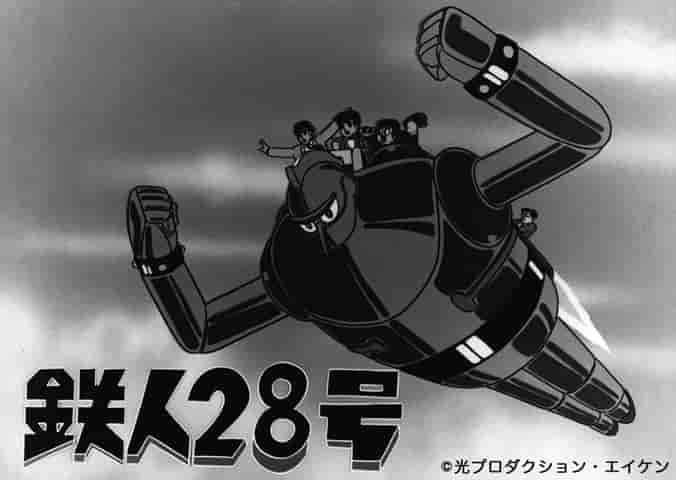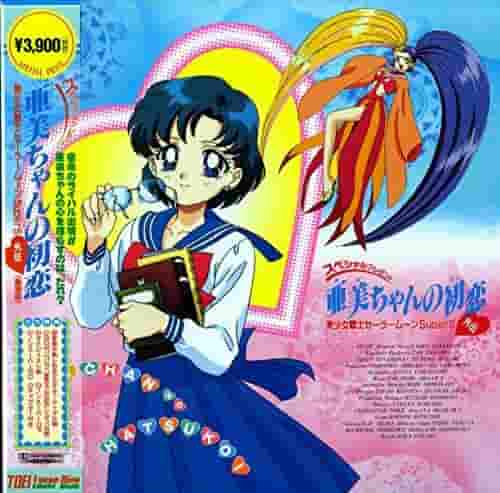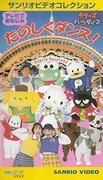Nyan no Urashima: A thorough review of the cat's adventures and touching story

Nyan no Urashima - Nyan no Urashima■ Public Mediatheater ■ Original MediaAnime Original ■ Release dateMay 30, 1939 - January 1, 0000 ■Distribution companyJapanese Short Film Company ■ Number of EpisodesEpisode 1 ■ DirectorKenzo Masaoka ■ ProductionJapan Animation Research Institute ■ StoryKuronyan the black cat is disliked by everyone because of his black color. In his sadness, he jumps into the sea, but is washed up by the waves. He helps a turtle that has also been washed up by the waves and is upside down and unable to get up. As a token of his gratitude, the turtle shows Kuronyan to the Dragon Palace, but when he sees a school of sardines through the window, he suddenly becomes hungry and breaks the windowpane, causing the Dragon Palace to flood. The water subsides when the waterproofing team is called in, but he is scolded by the Minister Octopus and taken back to land. When he returns home, he finds no one there. When he opens the treasure box he received as a souvenir, white smoke comes out and he turns into a white-haired cat, who becomes loved by everyone. ■ExplanationJapan's first all-prescored film, "Urashima the Cat," released in 1939, occupies an important place in the history of Japanese animation films. Not only did the film demonstrate the technical innovation of its time, but it also deeply moved audiences by balancing narrative and visual expression. In particular, the character of Black Nyan combined visual appeal with emotional depth to capture the hearts of many people. "Nyan no Urashima" is not just a work of entertainment, but also contains a social message. The setting in which Black Nyan is hated because of his black color symbolizes the discrimination and prejudice that existed in Japanese society at the time. However, by the end of the story, Black Nyan has transformed into a white-haired cat and is loved by everyone, demonstrating that inner beauty and good deeds have the power to transcend external appearances. This message resonates with many people even today, enhancing the universality of the work. ■ Main staff・Cinematography: Kimura Kakuyama ・Music: Hitachi Jiro ・Sound: Japan Film Science Institute ■Detailed explanation"Urashima the Cat" is a 1939 animated film distributed by Nippon Tanpen Eigasha and produced by the Japan Animation Institute. It was directed by Kenzo Masaoka, whose unique perspective and creativity contributed greatly to the film. Cinematography was by Kakuyama Kimura, music by Jiro Hitachi, and sound by the Japan Motion Picture Science Institute, and the technical and artistic qualities of each of these areas of expertise contributed to the overall quality of the film. This work is known as the first "all-prescore" work in the history of Japanese animation films. "All-prescore" refers to the technique of synchronizing the sound throughout the entire film, which allows sound to play an important role in addition to visual expression. In "Nyan no Urashima," the voice of Black Nyan and the background music contributed greatly to the progression of the story, and had the effect of enhancing the emotions of the audience. The story begins with the sad reality that Kuronyan, a black cat, is hated by everyone because of his black color. In his sadness, Kuronyan jumps into the sea, but is washed up by the waves and ends up saving a turtle that has also been washed up by the waves. The turtle expresses his gratitude and guides Kuronyan to Ryugu-jo Castle. However, once in Ryugu-jo Castle, Kuronyan is attracted to a school of sardines visible through the window and breaks the glass. This causes Ryugu-jo Castle to become flooded, and a waterproofing team is called in to stop the water, but Kuronyan is scolded by Minister Octopus and sent back to land. When he returns home to find no one there, Kuronyan opens a treasure box that he received as a souvenir. White smoke comes out and Kuronyan turns into a white-haired cat, becoming loved by everyone. Although this story is based on the legend of Urashima Taro, its unique interpretation and creativity give it new appeal. In particular, the character of Kuronyan is not only visually appealing but also has emotional depth, evoking deep sympathy with the audience. Furthermore, the setting in which Kuronyan is hated because of his black color symbolizes the discrimination and prejudice in society at the time, and this issue is raised throughout the work. However, by the end of the story, Kuronyan turns into a white-haired cat and is loved by everyone, demonstrating that inner beauty and good deeds have the power to transcend external appearances. This message resonates with many people even today, enhancing the universality of the work. Technical FeaturesThere are many notable technical aspects to "Nyan no Urashima." In particular, the use of "all pre-scoring" was an innovative attempt in the Japanese animation film industry at the time. This allowed sound to play an important role in addition to visual expression, improving the quality of the entire work. The use of cinematography and music also contributed greatly to the progression of the story and had the effect of evoking the emotions of the audience. Cinematographer Kimura Kakuyama used the technology of the time to portray the movements and expressions of Black Nyan realistically, deeply moving the audience. Musician Hitachi Jiro provided beautiful melodies that matched the atmosphere of the story, enhancing the overall emotional impact of the film. Recording company Japan Film Science Institute used the latest technology to perfectly synchronize the sound, achieving a fusion of visual expression and sound. These technical features made "Nyan no Urashima" an even more fascinating film. ■ Social impact"Urashima the Cat" has been loved by many people since its release and has had a social impact. In particular, the character of Black Meowth captured the hearts of many people with its visual appeal and emotional depth. Furthermore, the fact that the story raised issues of discrimination and prejudice had a major impact on society at the time. The setting in which Black Meowth is hated because of his black color symbolizes the discrimination and prejudice in Japanese society at the time, and this issue is raised throughout the film. However, by the end of the story, Black Meowth turns into a white-haired cat and is loved by everyone, demonstrating that inner beauty and good deeds have the power to transcend external appearances. This message resonates with many people even today, enhancing the universality of the film. "Urashima the Lion" also occupies an important place in the history of Japanese animation films. In particular, the adoption of "all pre-scoring" was an innovative attempt in the Japanese animation film industry at the time. This allowed sound to play an important role in addition to visual expression, improving the quality of the entire work. This technical innovation had a major impact on the development of later Japanese animation films. ■Recommendation"Urashima the Cat" is a work that combines visual appeal and emotional depth, which is why it is loved by so many people. In particular, the character of Black Meow has both visual appeal and emotional depth, and has captured the hearts of many people. In addition, the fact that the story raised issues of discrimination and prejudice had a major impact on society at the time. The setting in which Black Meow is hated because of his black color symbolizes the discrimination and prejudice in Japanese society at the time, and this issue is raised throughout the work. However, by the end of the story, Black Meow turns into a white-haired cat and is loved by everyone, which shows that inner beauty and good deeds have the power to transcend external appearances. This message resonates with many people even today, enhancing the universality of the work. "Urashima the Lion" also occupies an important place in the history of Japanese animation films. In particular, the adoption of "all pre-scoring" was an innovative attempt in the Japanese animation film industry at the time. This allowed sound to play an important role in addition to visual expression, improving the quality of the entire work. This technical innovation had a major impact on the development of later Japanese animation films. "Urashima the Cat" is a work that combines visual appeal and emotional depth, which is why it is loved by so many people. In particular, the character of Black Meow has both visual appeal and emotional depth, and has captured the hearts of many people. In addition, the fact that the story raised issues of discrimination and prejudice had a major impact on society at the time. The setting in which Black Meow is hated because of his black color symbolizes the discrimination and prejudice in Japanese society at the time, and this issue is raised throughout the work. However, by the end of the story, Black Meow turns into a white-haired cat and is loved by everyone, which shows that inner beauty and good deeds have the power to transcend external appearances. This message resonates with many people even today, enhancing the universality of the work. "Urashima the Lion" also occupies an important place in the history of Japanese animation films. In particular, the adoption of "all pre-scoring" was an innovative attempt in the Japanese animation film industry at the time. This allowed sound to play an important role in addition to visual expression, improving the quality of the entire work. This technical innovation had a major impact on the development of later Japanese animation films. "Urashima the Cat" is a work that combines visual appeal and emotional depth, which is why it is loved by so many people. In particular, the character of Black Meow has both visual appeal and emotional depth, and has captured the hearts of many people. In addition, the fact that the story raised issues of discrimination and prejudice had a major impact on society at the time. The setting in which Black Meow is hated because of his black color symbolizes the discrimination and prejudice in Japanese society at the time, and this issue is raised throughout the work. However, by the end of the story, Black Meow turns into a white-haired cat and is loved by everyone, which shows that inner beauty and good deeds have the power to transcend external appearances. This message resonates with many people even today, enhancing the universality of the work. "Urashima the Lion" also occupies an important place in the history of Japanese animation films. In particular, the adoption of "all pre-scoring" was an innovative attempt in the Japanese animation film industry at the time. This allowed sound to play an important role in addition to visual expression, improving the quality of the entire work. This technical innovation had a major impact on the development of Japanese animation films in the future. |
<<: Benkei vs. Ushiwaka: The appeal and evaluation of the anime depicting the legendary showdown
Recommend
The latest trailer for the movie "Knights of Sidonia" will be released on May 14
The animated film "Knights of Sidonia",...
The appeal and reviews of "Magical Girl Tai!": An anime experience not to be missed
Wizard Tai! - Review and Recommendation ■ Public ...
The appeal and reviews of "Hula Hula Dance": A heartwarming coming-of-age story
Hula Hula Dance - The Intersection of Youth and D...
Wanda Films is about to change hands, with Tencent appearing behind Shanghai Ruyi
Wanda Film and Television recently issued an anno...
The appeal and evaluation of "Geneshaft": A must-read review for anime fans
Geneshaft - A science fiction anime about a genet...
"Investiture of the Gods: Part 1" box office exceeds 2 billion, Yin Jiao Dharma Image concept design released
According to Maoyan Professional Edition data, th...
A thorough review of Dinosaur Special! The shocking reality of the world's largest dinosaur graveyard in Inner Mongolia, China
Dinosaur Special: Great Excavation! The world'...
"Doctor Strange 2" new makeup photos Doctor Strange variant and Baron Mordo debut
"Doctor Strange 2: In the Multiverse of Madn...
Trailer for Japanese horror film "Doll House" starring Masami Nagasawa
The trailer for the horror film "Doll House&...
The new animation of "Macross" is confirmed to be produced and a new singing girl audition will be held
The classic anime "Macross" has become ...
"Da Chao" was accused of disrespecting women and showing misogyny in playing games
The third season of the live-action series "...
"Kingdom" Original Soundtrack Preview Created by Hiroyuki Sawano, Released on July 21
The third season of the popular anime "Kingd...
Review of "Megumi no Daigo": A moving story of youth and friendship
All-round review and recommendation of Megumi no ...
Cameron criticizes Aquaman for underwater scenes not being realistic
James Wan's Aquaman has achieved great succes...
A detailed review and rating of the unaired episode of "Gen'ei wo Kakeru Taiyo"
The sun that runs through illusions - Unaired epi...









